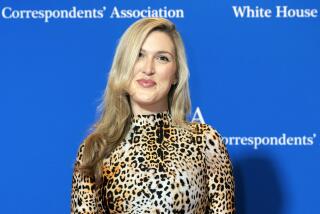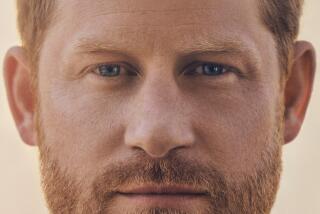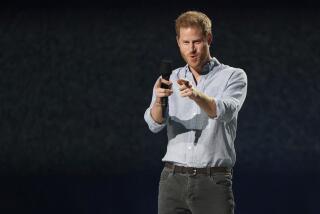BOOK REVIEW / BIOGRAPHY : This Wasn’t Always a Beautiful Friendship : HARRY & TEDDY: The Turbulent Friendship of Press Lord Henry R. Luce and His Favorite Reporter, Theodore H. White <i> by Thomas Griffith</i> ; Random House $24, 340 pages
- Share via
Thomas Griffith’s gripping book about the friendship of Teddy White and Henry R. Luce opens like an adventure story. He writes of the 1930s, a time when foreign correspondents sometimes packed guns, roamed parts of the world still not found on maps and worked for press lords who could virtually dictate national policy.
White, fresh out of Harvard, dashes off to China to cover China’s war with Japan and China’s internal conflict between Communist forces and the Nationalist government of Chiang Kai-shek:
“On a sandbar in the center of the Yangtze where it passes the city of Chungking sat a tiny airstrip that could be used only until late spring, when raging waters from Tibet’s melting snows flooded it. Teddy White . . . was told that he would be allowed only eight pounds of baggage. ‘I put on my body the following clothes: six pairs of running pants, 6 athletic shirts, one pajamas, 2 sports shirts, 3 silk shirts, 2 vests, 2 coat jackets, a gray sweater, 9 pairs of socks, 2 pairs of pants, 2 suspenders, one belt, 13 handkerchiefs, 3 ties.’ . . . Then he talked the clerk into letting him take aboard a final bulky item, his secondhand typewriter.”
(In the movie version, Harrison Ford would emerge from the DC-3, looking lean and trim despite the 47 layers of clothes he’s put on. But Dustin Hoffman would be a more appropriate casting possibility.)
Meanwhile, Time founder and publisher Henry R. Luce, the son of a missionary who grew up in China, sends editor John Hersey, another “mishkid” and Yalie, to China to find a part-time correspondent for Time. Hersey meets up with and hires the relatively inexperienced White.
White meets his new boss when Luce makes his highly publicized 1941 visit to Chungking. One day, wanting to escape his “smothering government escorts,” Luce commands White to sneak away with him. Off they go, ordering rickshaw drivers in halting Chinese, poking in and out of shops.
It’s the beginning of a not-always beautiful friendship. “They had little in common: Luce was tall, White short; Luce was rich, White poor. . . . (White) was Jewish-left instead of Presbyterian-right.”
We are soon transferred from China to another theater of war: the headquarters of the Luce magazine empire in New York.
The best sections of “Harry and Teddy” are Griffith’s descriptions of day-to-day life at Time and to a lesser degree, Fortune and Life magazines. Luce believed that it was “easier to turn poets into business journalists than to turn bookkeepers into writers.” He brought in the poets, the mavericks (Archibald MacLeish, John Kenneth Galbraith, James Agee, the “hillbilly” from Harvard).
As Luce’s passions for the Republican Party and Chiang’s Nationalists took deeper root, his working relationships with independent-minded spirits grew problematic. White was only one among numerous writers and editors who would eventually break away from Time, pleading a need for more independence.
White, as Griffith portrays him, was a liberal for much of his career, who grew conservative with age. As a member of the press corps covering the presidential election in 1960, he favored Kennedy, but was notably softer on Nixon than most of his fellow journalists.
Famous for his “Making of the President” series, perhaps his most notable moment was the “urgent call” he received from Jacqueline Kennedy, one week after the assassination. The presses at Life were held for hours at $30,000 an hour while White interviewed the newly widowed First Lady. Together, they coined the term “Camelot” to describe the Kennedy Administration’s “brief shining moment.”
Griffith’s “Harry & Teddy” works as a fascinating look at the press for journalism students and a fresh look at the “bad old days” for print veterans.
Luce, the press lord who thought he was on a mission from God, remains an enigmatic figure in journalistic history, a man of vision, integrity and limitations. How journalism could bring such disparate personalities like Theodore White and Henry R. Luce together says more about the possibilities of the press than about the men themselves.
More to Read
Sign up for our Book Club newsletter
Get the latest news, events and more from the Los Angeles Times Book Club, and help us get L.A. reading and talking.
You may occasionally receive promotional content from the Los Angeles Times.










